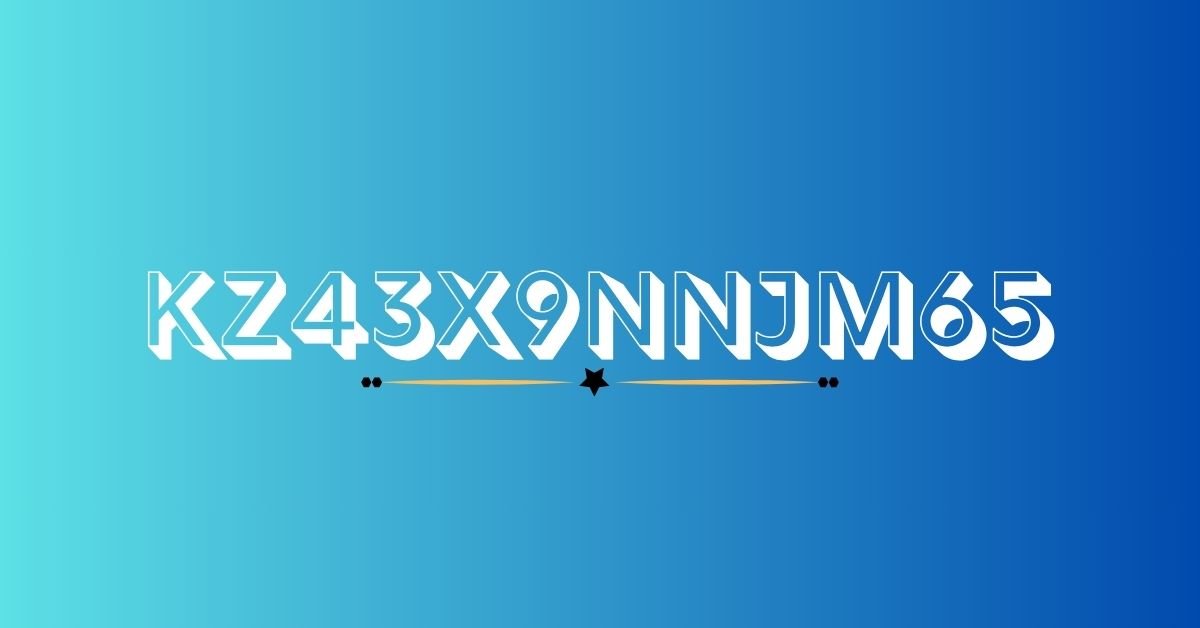If you’ve recently come across the string kz43x9nnjm65, you’re not alone. It’s been showing up in forums, snippets of code, obscure digital threads, and even casual tech discussions. For many, it feels like a random jumble of characters—but for those who dig a little deeper, kz43x9nnjm65 is part of a growing digital curiosity that mixes the worlds of data, cryptic references, and internet subcultures.
So what is kz43x9nnjm65, why is it gaining traction, and should you be paying attention? Let’s break it down clearly and practically.
Decoding kz43x9nnjm65: More Than Just Random Characters
Why strings like this exist online
The internet thrives on unique identifiers. Whether it’s a short hash from a blockchain ledger, a filename generated by a server, or a verification key for an app, we’re surrounded by these cryptic codes. kz43x9nnjm65 fits that style perfectly. It could serve as:
-
A database reference for a hidden record
-
A software build ID
-
Part of a URL or API endpoint
-
An encryption test string or dummy payload
None of these uses are unusual in the digital realm. Systems generate such strings precisely because they are random, unique, and unlikely to clash with other identifiers.
Why kz43x9nnjm65 stands out
Most people wouldn’t notice these until they surface repeatedly or get shared widely. kz43x9nnjm65 has started popping up across social channels and smaller tech blogs, sparking theories about hidden data, secret software tests, or even playful internet Easter eggs.
Common Theories Behind kz43x9nnjm65
A placeholder gone viral
One likely reason you’re seeing kz43x9nnjm65 is that it was originally a harmless placeholder. Developers often insert random strings during testing. Occasionally, these placeholders escape into production—perhaps embedded in a web page’s metadata, hidden in a CSS file, or accidentally sent out via an API. Once spotted, such strings get shared by curious users and quickly gain a life of their own.
A breadcrumb from private projects
Sometimes strings like kz43x9nnjm65 trace back to private tools, beta programs, or internal documentation. Once these projects intersect with the public internet—through a poorly secured endpoint or an overlooked file—curious eyes start poking around. Before long, speculation follows.
Simple curiosity-fueled hype
The internet loves mysteries. Unexplained snippets attract hobbyist sleuths eager to decode them. Posts appear on Reddit, small forums, and even TikTok, each adding their spin. In many cases, what starts as a trivial technical artifact becomes a mini internet legend.
Is kz43x9nnjm65 Harmful or Dangerous?
Should you be worried?
From all credible indications, kz43x9nnjm65 isn’t tied to malware, phishing, or scams. Unlike suspicious links that attempt to harvest data, standalone strings like this don’t execute code or install harmful payloads. However, always be cautious when clicking on unknown links that claim to “reveal” secrets about such codes—those could indeed be malicious.
Keep it in context
For most users, kz43x9nnjm65 remains an interesting digital oddity rather than a security threat. Think of it as a harmless conversation starter in niche corners of the tech world.
Real-World Examples of Similar Strings
How these show up across the web
-
On GitHub, developers often commit code with test identifiers that resemble kz43x9nnjm65.
-
Databases generate transaction IDs or query hashes that look equally obscure.
-
In encrypted apps or password managers, you’ll see randomized strings that serve as keys or seeds.
Each of these examples highlights how normal such cryptic data can be behind the scenes. The only difference with kz43x9nnjm65 is its accidental jump into public curiosity.
Why the Buzz Matters: A Peek into Digital Culture
Small mysteries like kz43x9nnjm65 reveal something fun about internet culture. They show how quickly people latch onto an anomaly, build theories around it, and turn it into an online phenomenon. It’s the same playful energy that makes memes and obscure inside jokes spread rapidly. For developers, it’s also a light-hearted reminder to clean up placeholders before pushing code live.
Conclusion
In the end, kz43x9nnjm65 isn’t a sinister trap or a groundbreaking revelation—it’s a quirky artifact of how technology works. These strings appear all over software ecosystems, usually serving boring but essential roles like indexing, authenticating, or simply acting as filler. The only reason kz43x9nnjm65 stands out is the collective human tendency to find meaning (or at least entertainment) in anything unexplained.
So if you spot it again, you’ll know exactly what you’re looking at: a tiny puzzle piece of the vast, intricate, often amusing world of digital systems. It’s another small reminder of how much hidden structure supports our modern internet experiences, and how curious minds can turn even a random string into a talking point.
